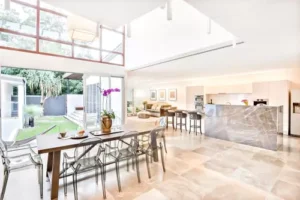The Benefits of Multi-Generational Homes
Multi-Generational Homes are ideal for families that want to share a house with different generations. The main purpose of a multi-generational home is to accommodate multiple generations. They can include two adult generations living together, or a parent and their adult children. Even four generations can live together in one home. For example, a multi-generational home can be designed to accommodate several generations of a family, with separate living areas for each. In addition, multi-generational homes can accommodate a live-in nanny or au pair, and there are options for special needs and handicapped residents. The main benefit of a multi-generational home is that it offers privacy to all members.

Despite the growing number of multi-generational households, many people are unsure how to create a home that will accommodate these arrangements. The concept of a multi-generational home is not all that new. According to some experts, approximately one in six families today are made up of multiple generations. This trend has been growing for a long time, but more families choose to live in one single home. This article discusses the benefits of multi-generational homes.
The benefits of multi-generational homes are many, which includes the following:
- They allow aging parents to live with their children.
- They can accommodate grown-up children who have moved back home after graduation or divorce.
- A multi-generational home can be a place where a nanny or au pair can live.
These homes are also great for relatives who need extended care. Ideally, multi-generational homes provide space for all members of a family and are a good choice for older parents and grandparents.
The multi-generational home concept allows for extended family relationships to be formed without the need for travel. The elderly can watch their children grow up and learn the family recipes from their parents. And the children can learn the skills of playing catch with their grandparents. In fact, research has shown that close relationships with a grandparent can affect a child’s behavior and health. In addition, adult children who move back in with their parents can get to know them as adults.
Multi-generational homes can be ideal for families who want to share a home. They will help save money, but they will also allow older relatives to live together in one place. This can make it more comfortable for the whole family. In addition, they can give their children the gift of being close to their grandparents. Having an adult in the same household allows their parents to become more familiar with their children.
Multi-generational homes are beneficial for older adults who want to age with their parents. They can be particularly useful for those with special needs, such as a nanny. The flexibility of a multi-generational home is one of its biggest advantages, but it can also pose some challenges. It can be difficult to establish boundaries and maintain privacy for all the family members. In the end, it is worth the effort to make your family members happy.
There are many benefits of living in a multi-generational home. A multi-generational home can help families share expenses and responsibilities. By sharing responsibilities and living together, multi-generational households can save on utility costs, insurance, mortgage, and daycare costs. The additional advantage is that the environment is more energy-efficient and comfortable. Having a multi-generational home will foster family ties and help members live in harmony with each other.
Older adults often use Multi-generational homes. Some people have aging parents who would like to live with their children. Other families may want to stay with their parents for a long time. These multi-generational homes can help families stay in touch and make the most of the quality time. A multi-generational home can even be used to accommodate relatives who visit from out of town. However, the main advantage of a multi-generational home is that it can accommodate different generations in a single home.
A multi-generational home can also help families that live in a neighborhood with aging parents. For example, a multigenerational home can accommodate parents who are living with their aging parents. It can also accommodate a live-in au pair or nanny. Moreover, it can also accommodate special needs members of the family. In a multi-generational home, everyone can live together in a peaceful atmosphere without feeling isolated or claustrophobic.
